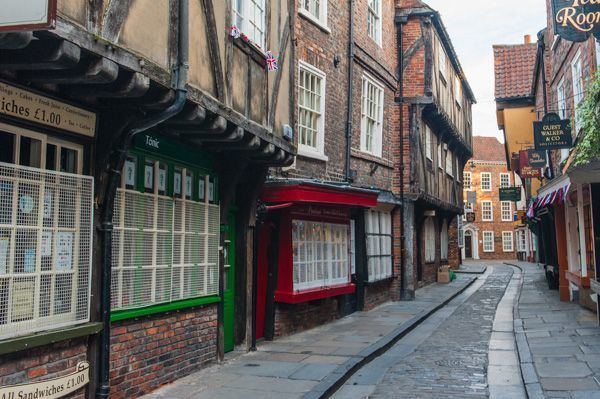 | ||
Similar York Minster, York city walls, York Castle Museum, Jorvik Viking Centre, York Castle | ||
The Shambles (official name Shambles) is an old street in York, England, with overhanging timber-framed buildings, some dating back as far as the fourteenth century. It was once known as The Great Flesh Shambles, probably from the Anglo-Saxon Fleshammels (literally 'flesh-shelves'), the word for the shelves that butchers used to display their meat. As recently as 1872 twenty-five butchers' shops were located along the street, but now none remain.
Contents
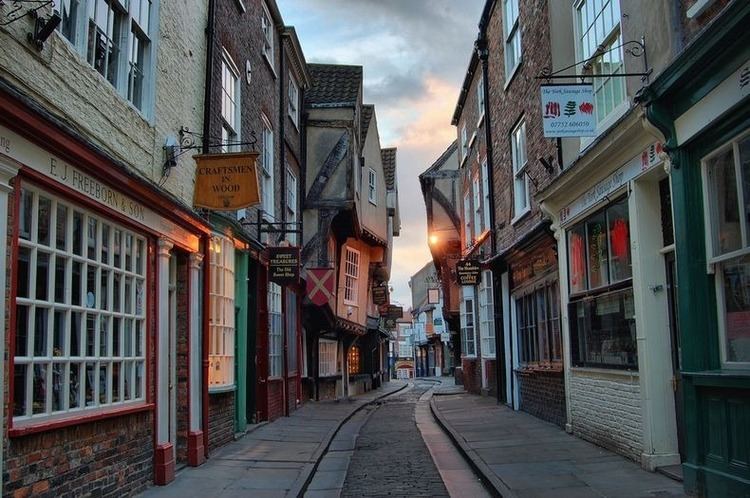
Among the buildings of the Shambles is a shrine to Saint Margaret Clitherow, who was married to a butcher who owned and lived in a shop there at No. 10 Shambles. Her home is now a cufflinks shop, Cuffs & Co, and features the priest hole fireplace that ultimately led to her death.
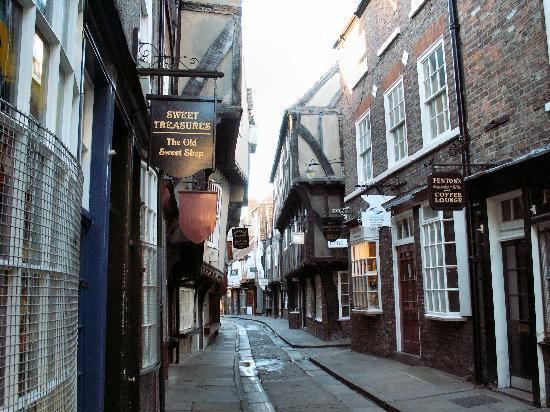
Although the butchers have now vanished, a number of the shops on the street still have meat-hooks hanging outside and, below them, shelves on which meat would have been displayed. The shops currently include a mixture of eateries and souvenir sellers, but there is also a bookshop and a bakery.
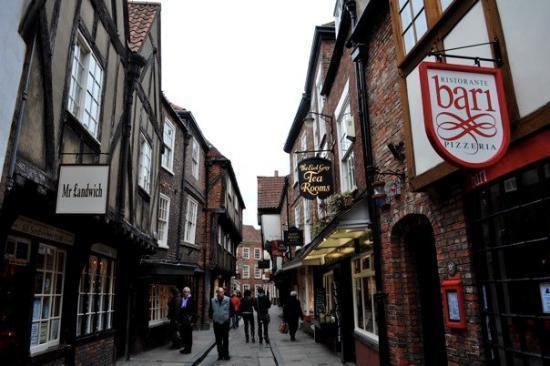
Five Snickelways lead off the Shambles.
One of the most picturesque parts of the Shambles, is the Little Shambles Jewellers, which features a prominent 'Little Shambles' sign on it's building. It is arguably the most photographed spot in the Shambles and this is likely due to the buildings old fashioned decor and gorgeous window displays.
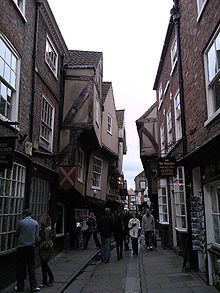
There are streets named "The Shambles" in other UK towns (e.g., Bradford on Avon, Chesterfield, Chippenham, Manchester, Sevenoaks, Whitby, Worcester, Armagh), and in Ireland (there is a Fishamble Street in Dublin).
The shambles the history the images
The Shambles as an ancient market stall
"Shambles" is an obsolete term for an open-air slaughterhouse and meat market. Streets of that name were so called from having been the sites on which butchers killed and dressed animals for consumption. The Shambles in Stroud still has the hinged wooden boards attached to the shops, and hosts a regular local market.
The Shambles in Shepton Mallet, Somerset is a much shorter replica of the fourteenth century shambles that housed the regular Monday market since 1318. The market however was moved to Friday in 1641 and is still held around the local shambles monument.
During that period there were no sanitary facilities or hygiene laws as exist today, and guts, offal, and blood were thrown into a runnel down the middle of the street or open space where the butchering was carried out.
